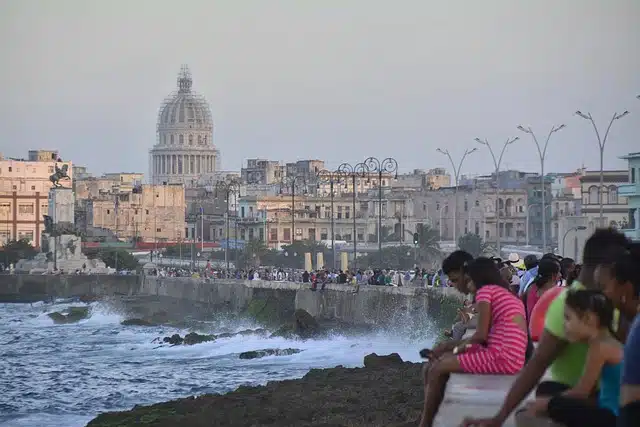
A seawall is a wall that serves as a defense against the advance of water.
The wall that is built as a defensive mechanism against the advance of water is called a pier . Generally, a seawall is a breakwater : a dike that goes into the sea.
Piers are structures that seek to protect a port or the coast from the onslaught of waves . Its design is carried out by experts in hydraulic engineering , who must consider various variables in order to determine how the pier has to be built to be effective.
In several countries , on the other hand, the walk that takes place next to a river or the sea is called a boardwalk. This is the circulation route that, in other regions, is known as the coastal road .
Havana Malecon
The boardwalk of Havana , in Cuba , is the most famous in the world . This avenue, which has six lanes and is protected by a wall, extends eight kilometers in the northern area of the Cuban capital.
The Havana boardwalk began to be erected in 1901 . Over the years it expanded until it reached its current appearance. In different sectors of the boardwalk it is possible to find numerous monuments and buildings of great importance.

The Havana boardwalk is one of the most famous.
Monuments and notable buildings
Among the monuments that we can find along the boardwalk we can highlight the following three: that of General Calixto García , that of Major General Antonio Maceo and that of Generalísimo Máximo Gómez . Paseo Avenue, Presidents Avenue and 23rd Street are some of the most relevant among those that lead to the boardwalk.
On the other hand, we have the buildings that are found along the avenue and that have great historical relevance. Among them are the Castillo de San Salvador de la Punta , the Hotel Nacional de Cuba , the Torreón de la Chorrea , the American embassy , the Castillo de la Real Fuerza de La Habana and the Torreón de San Lázaro .
Included in the UNESCO World Heritage Site since 1982 , the Havana boardwalk has long transcended its defensive purpose. Today it is one of the main tourist attractions of the capital of Cuba , with activities and movement throughout the day.
It is necessary to highlight this last aspect of the Havana boardwalk, since serving tourists and citizens is among its most important functions, in addition to the obvious stoppage of water .
Construction of the Havana boardwalk
The construction of the Havana boardwalk was carried out in four successive phases over five decades. Each one is detailed below, including the start and end dates and the point in the city to which it had been built at that time:
* The first part lasted approximately two years, beginning in 1901. At that time, the boardwalk began at Paseo del Prado and ended at Crespo Street ;
* Unlike the previous phase, the second lasted nineteen years, from 1902 to 1921. Once completed, the length of the boardwalk had grown, as it reached the Maine Monument. The USS Maine (ACR-1) was a battleship belonging to the North American Navy, specifically the second to be used and the first to have been baptized with the term "Maine", in reference to one of the fifty states;
* The third phase of the construction of the Havana boardwalk lasted until the following decade, at which time the wall reached the Avenida de los Presidentes;
* The work came to an end in 1952, after a long pause that had postponed it until 1948. It was then that the Havana boardwalk reached the mouth of the Almendares River.
It should be noted that Peru , Colombia and Ecuador , among other nations , also have boardwalks. Each one has its particularities according to the location and the use given to it.
